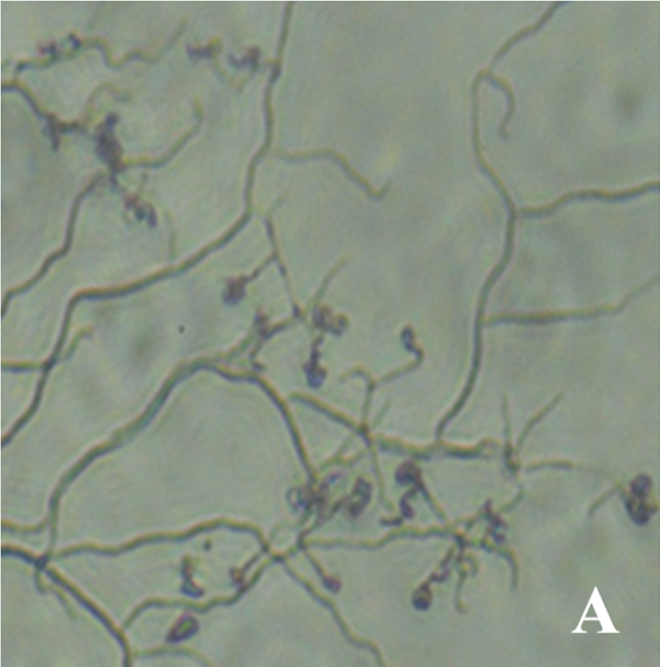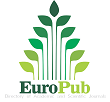Determination of tannin acyl hydrolase activity of Streptomyces mirabilis TBGS10 by measuring gallic acid using high-pressure liquid chromatography
DOI:
https://doi.org/10.18686/fnc.v1i3.50Keywords:
Streptomyces mirabilis; tannase; HPLC; gallic acid production; solid state fermentationAbstract
Tannase is a hydrolytic enzyme, known as tannin acyl hydrolase, that acts on the ester bonds of hydrolyzable tannins to produce gallic acid. Tannase enzymes are obtained from various sources. Tannase from microbial sources, especially fungi, such as Aspergillus spp., has been used in the food, brewing, and pharmaceutical industries. Tannin acyl hydrolase activities of Actinomycetes are seldom reported, though they are known to produce a wide range of industrial enzymes. This communication deals with the tannase activity of a Streptomyces isolate from the shola forests of Munnar in the Western Ghats of Kerala, India. The isolate is identified as S. mirabilis TBGS10 based on morphological characters and the 16s rDNA homology. The isolate showed promising tannase activity in plate assays and under submerged and solid-state fermentation conditions. High-pressure liquid chromatography was used to determine the industrially important intermediate gallic acid produced through solid-state fermentation using cashew apple bagasse as the substrate. The extract was observed to have a gallic acid content of 142.624 g/mL with a retention time of 2.506 min. The tannase gene of the strain TBGS10 was PCR-amplified using specific primers designed based on similar Streptomyces sequences available in the NCBI-GenBank.

Downloads
Published
How to Cite
Issue
Section
License
Copyright (c) 2023 Shiburaj Sugathan, Soumya Koippully Manikandan, Sajna Salim, Sabu Abdulhameed

This work is licensed under a Creative Commons Attribution-NonCommercial 4.0 International License.
References
1. Chávez-González M, Rodríguez-Durán LV, Balagurusamy N. Biotechnological advances and challenges of tannase: An overview. Food Bioprocess Technology 2012; 5(2): 445–459. doi: 10.1007/s11947-011-0608-5 DOI: https://doi.org/10.1007/s11947-011-0608-5
2. Wu C, Zhang F, Li L, et al. Novel optimization strategy for tannase production through a modified solid-state fermentation system. Biotechnology for Biofuels and Bioproducts 2018; 11: 92. doi: 10.1186/s13068-018-1093-0 DOI: https://doi.org/10.1186/s13068-018-1093-0
3. Jana A, Halder SK, Ghosh K, et al. Tannase immobilization by chitin-alginate based adsorption entrapment technique and its exploitation in fruit juice clarification. Food Bioprocess Technology 2015; 8: 2319–2329. doi: 10.1007/s11947-015-1586-9 DOI: https://doi.org/10.1007/s11947-015-1586-9
4. Beniwal V, Kumar A, Sharma J, Chhokar V. Recent advances in industrial application of tannases: A review. Recent Patents on Biotechnology 2013; 7(3): 228–233. doi: 10.2174/18722083113076660013 DOI: https://doi.org/10.2174/18722083113076660013
5. Dhiman S, Mukherjee G, Singh AK. Recent trends and advancements in microbial tannase-catalyzed biotransformation of tannins: A review. International Microbiology 2018; 21(4): 175–195. doi: 10.1007/s10123-018-0027-9 DOI: https://doi.org/10.1007/s10123-018-0027-9
6. Farha AK, Yang QQ, Kim G, et al. Tannins as an alternative to antibiotics. Food Bioscience 2020; 38: 100751. doi: 10.1016/j.fbio.2020.100751 DOI: https://doi.org/10.1016/j.fbio.2020.100751
7. García Méndez MG, Morales Martínez TK, Ascacio Valdés JA, et al. Application of lactic acid bacteria in fermentation processes to obtain tannases using agro-industrial wastes. Fermentation 2021; 7(2): 48. doi: 10.3390/fermentation7020048 DOI: https://doi.org/10.3390/fermentation7020048
8. Barrios-González J. Solid-state fermentation: Physiology of solid medium, its molecular basis and applications. Process Biochemistry 2012; 47(2): 175–185. doi: 10.1016/j.procbio.2011.11.016 DOI: https://doi.org/10.1016/j.procbio.2011.11.016
9. Aharwar A, Parihar DK. Tannases: Production, properties, applications. Biocatalysis and Agricultural Biotechnology 2018; 15: 322–334. doi: 10.1016/j.bcab.2018.07.005 DOI: https://doi.org/10.1016/j.bcab.2018.07.005
10. Nishitani Y, Osawa R. A novel colorimetric method to quantify tannase activity of viable bacteria. Journal of Microbiological Methods 2003; 54(2): 281–284. doi: 10.1016/S0167-7012(03)00063-0 DOI: https://doi.org/10.1016/S0167-7012(03)00063-0
11. Girdhari SN, Peshwe SA. Screening of agro-residues for the production of microbial tannase. International Journal of Advanced Research 2017; 5: 625–631. doi: 10.21474/IJAR01/2790 DOI: https://doi.org/10.21474/IJAR01/2790
12. Sharma S, Bhat TK, Dawra RK. A spectrophotometric method for assay of tannase using rhodanine. Analytical Biochemistry 2000; 279(1): 85–89. doi: 10.1006/abio.1999.4405 DOI: https://doi.org/10.1006/abio.1999.4405
13. Shirling EB, Gottlieb D. Methods for characterization of Streptomyces species. International Journal of Systematic Bacteriology 1966; 16(3): 313–340. doi: 10.1099/00207713-16-3-313 DOI: https://doi.org/10.1099/00207713-16-3-313
14. Chakrabarti T. Detection of Polyene Class of Antifungal Antibiotics. Actinomycetes-Isolation, Screening, Identification and Gene Cloning in Streptomyces. Laboratory Manual. Institute of Microbial Technology (IMTECH); 1998.
15. Murray MG, Thompson WF. Rapid isolation of high molecular weight plant DNA. Nucleic Acids Research 1980; 8(19): 4321–4326. doi: 10.1093/nar/8.19.4321 DOI: https://doi.org/10.1093/nar/8.19.4321
16. Zuckerkandl E, Pauling L. Evolutionary divergence and convergence in proteins. In: Bryson V, Vogel HJ (editors). Evolving Genes and Proteins. Academic Press; 1965. pp. 97–166. DOI: https://doi.org/10.1016/B978-1-4832-2734-4.50017-6
17. Tamura K, Stecher G, Peterson D, et al. MEGA6: Molecular evolutionary genetics analysis version 6.0. Molecular Biology and Evolution 2013; 30(12): 2725–2729. doi: 10.1093/molbev/mst197 DOI: https://doi.org/10.1093/molbev/mst197
18. El Sohafy SM, Metwalli AM, Harraz FM, Omar AA. Quantification of flavonoids of Psidium guajava L. preparations by Planar Chromatography (HPTLC). Pharmacognosy Magazine 2009; 4(17): 61–66.
19. Samee W, Vorarat S. Simultaneous determination of gallic acid, catechin, rutin, ellagic acid, and quercetin in flower extracts of Michelia alba, Caesalpinia pulcherrima, and Nelumbo nucifera by HPLC. Thai Pharmaceutical and Health Science Journal 2007; 2: 131–137.
20. Tamura K, Nei M. Estimation of the number of nucleotide substitutions in the control region of mitochondrial DNA in humans and chimpanzees. Molecular Biology and Evolution 1993; 10(3): 512–526. doi: 10.1093/oxfordjournals.molbev.a040023 DOI: https://doi.org/10.1093/oxfordjournals.molbev.a040023
21. Roy S, Parvin R, Ghosh S, et al. Occurrence of a novel tannase (tan BLP) in endophytic Streptomyces sp. AL1L from the leaf of Ailanthus excelsa Roxb. 3 Biotech 2018; 8: 33. doi: 10.1007/s13205-017-1055-4 DOI: https://doi.org/10.1007/s13205-017-1055-4
22. Mueller-Harvey I, Parkes RJ. Measurement of volatile fatty acids in pore water from marine sediments by HPLC. Estuarine, Coastal and Shelf Science 1987; 25(5): 567–579. doi: 10.1016/0272-7714(87)90115-6 DOI: https://doi.org/10.1016/0272-7714(87)90115-6
23. Kumar SS, Sreekumar R, Sabu A. Tannase and its applications in food processing. In: Parameswaran B, Varjani S, Raveendran S (editors). Green Bio-processes. Energy, Environment, and Sustainability. Springer; 2019. pp. 357–381. doi: 10.1007/978-981-13-3263-0_19 DOI: https://doi.org/10.1007/978-981-13-3263-0_19
24. Sharma S, Gupta MN. Synthesis of antioxidant propyl gallate using tannase from Aspergillus niger van Tiegham in nonaqueous media. Bioorganic & Medicinal Chemistry Letters 2003; 13(3): 395–397. doi: 10.1016/S0960-894X(02)00977-0 DOI: https://doi.org/10.1016/S0960-894X(02)00977-0
25. de Lima JS, Cruz R, Fonseca JC, et al. Production, characterization of tannase from Penicillium montanense URM 6286 under SSF using agroindustrial wastes, and application in the clarification of grape juice (Vitis vinifera L.). The Scientific World Journal 2014; 2014: 182025. doi: 10.1155/2014/182025 DOI: https://doi.org/10.1155/2014/182025
26. Neethu RS, Pradeep NS. Isolation and characterization of potential tannase-producing fungi from mangroves and tanneries. Indian Journal of Applied Microbiology 2018; 21(3): 1–13. DOI: https://doi.org/10.46798/ijam.2018.v21i03.001
27. Tripathi AD, Lakshmi B. Statistical optimization of extracellular tannase production by Streptomyces sp. AT 13 using response surface methodology and Plackett-Burmen design. Bioscience Biotechnology Research Communications 2018; 11(4): 691–698. doi: 10.21786/bbrc/11.4/21 DOI: https://doi.org/10.21786/bbrc/11.4/21
28. Böer E, Bode R, Mock HP, et al. Atan1p—An extracellular tannase from the dimorphic yeast Arxula adeninivorans: Molecular cloning of the ATAN1 gene and characterization of the recombinant enzyme. Yeast 2009; 26(6): 323–337. doi: 10.1002/yea.1669 DOI: https://doi.org/10.1002/yea.1669
29. Lekshmi R, Nisha SA, Vasan PT, Kaleeswaran B. A comprehensive review on tannase: Microbes associated production of tannase exploiting tannin rich agro-industrial wastes with special reference to its potential environmental and industrial applications. Environmental Research 2021; 201: 111625. doi: 10.1016/j.envres.2021.111625 DOI: https://doi.org/10.1016/j.envres.2021.111625
30. Podrigues THS, Dantas MAA, Pinto GAS, Gonçalves LRB. Tannase production by solid state fermentation of cashew apple bagasse. In: Mielenz JR, Klasson KT, Adney WS, McMillan JD (editors). Applied Biochemistry and Biotecnology. ABAB Symposium. Humana Press; 2007. pp. 675–688. doi: 10.1007/978-1-60327-181-3_55 DOI: https://doi.org/10.1007/978-1-60327-181-3_55
31. Kar B, Banerjee R, Bhattacharyya BC. Effect of additives on the behavioural properties of tannin acyl hydrolase. Process Biochemistry 2003; 38(9): 1285–1293. doi: 10.1016/S0032-9592(02)00329-1 DOI: https://doi.org/10.1016/S0032-9592(02)00329-1
32. Pinto GAS, Leite SGF, Terzi SC, Couri S. Selection of tannase-producing Aspergillus niger strains. Brazilian Journal of Microbiology 2001; 32: 24–26. doi: 10.1590/S1517-83822001000100006 DOI: https://doi.org/10.1590/S1517-83822001000100006
33. Seth M, Chand S. Biosynthesis of tannase and hydrolysis of tannins to gallic acid by Aspergillus awamori—Optimisation of process parameters. Process Biochemistry 2000; 36(1–2): 39–44. doi: 10.1016/S0032-9592(00)00179-5 DOI: https://doi.org/10.1016/S0032-9592(00)00179-5
34. Deschamps AM, Lebeault JM. Production of gallic acid from tara tannin by bacterial strains. Biotechnology. Letters 1984; 6: 237–242. doi: 10.1007/BF00140043 DOI: https://doi.org/10.1007/BF00140043
35. Nalan Yılmaz S, Erdoğan Ç, Merih K, Muzaffer T. A method for the determination of tannase activity based on gallic acid measurement by high-performance liquid chromatography (HPLC). African Journal of Microbiology Research 2011; 5(2): 158–163. doi: 10.5897/AJMR10.548




.jpg)
.jpg)

